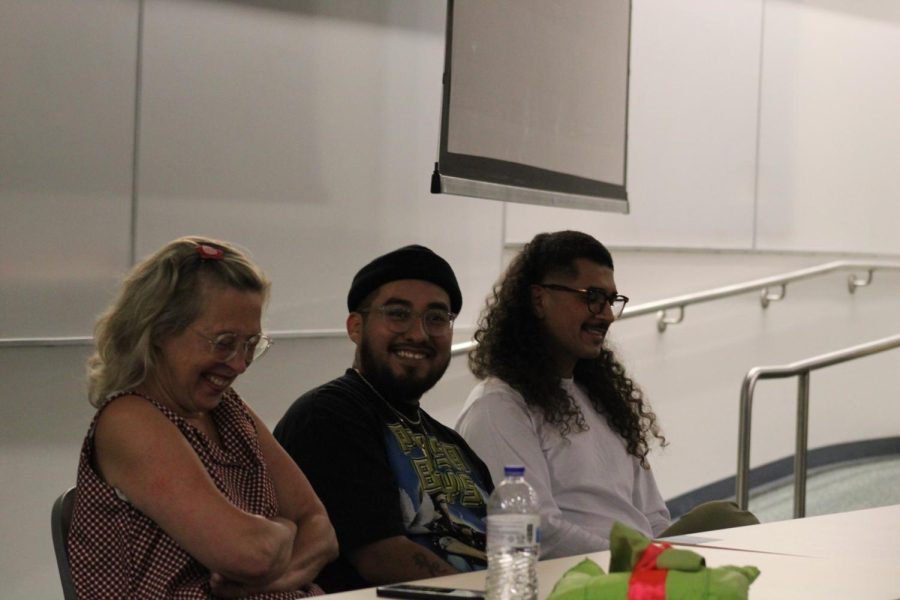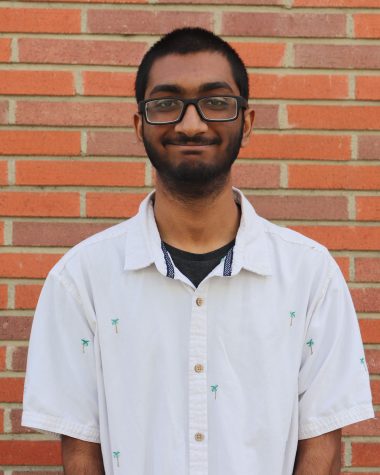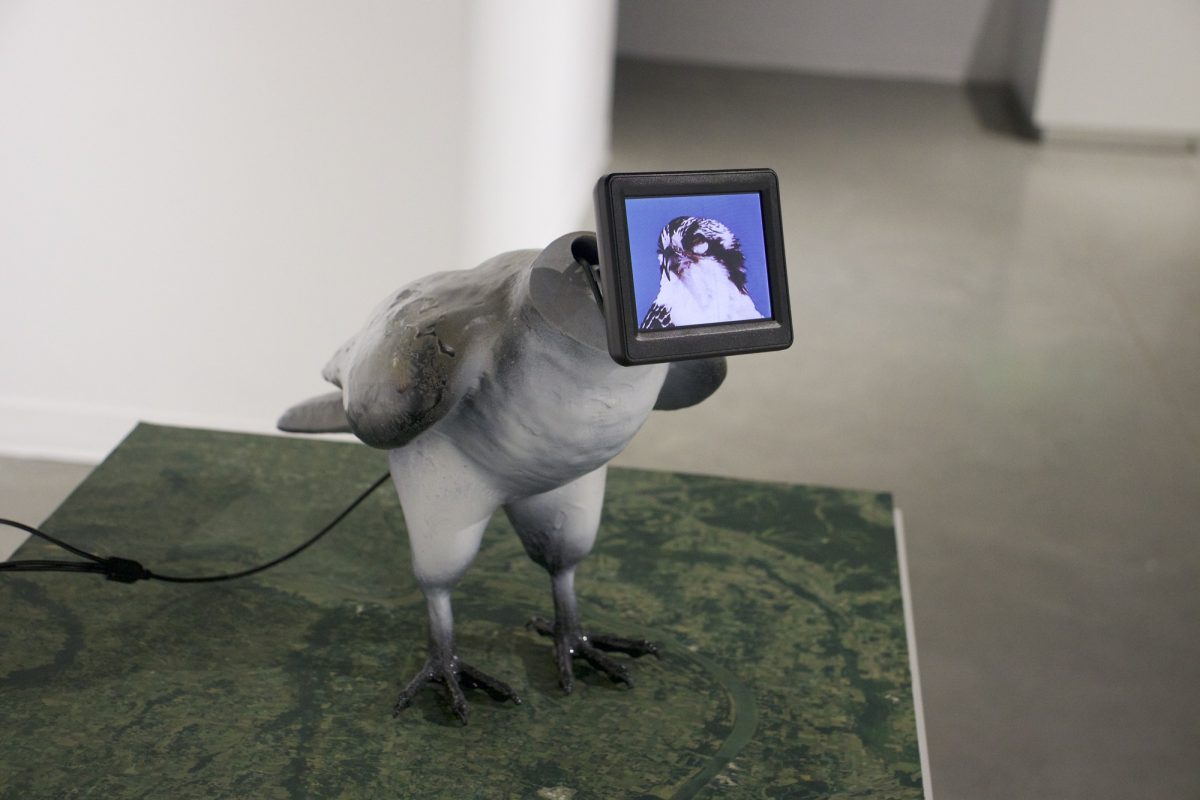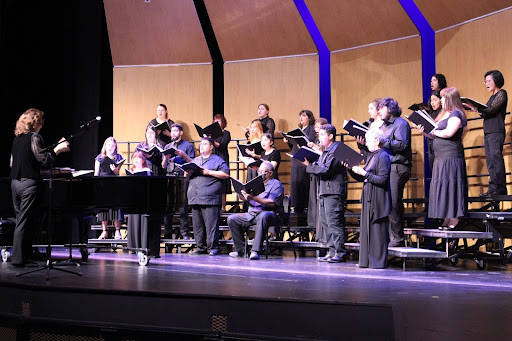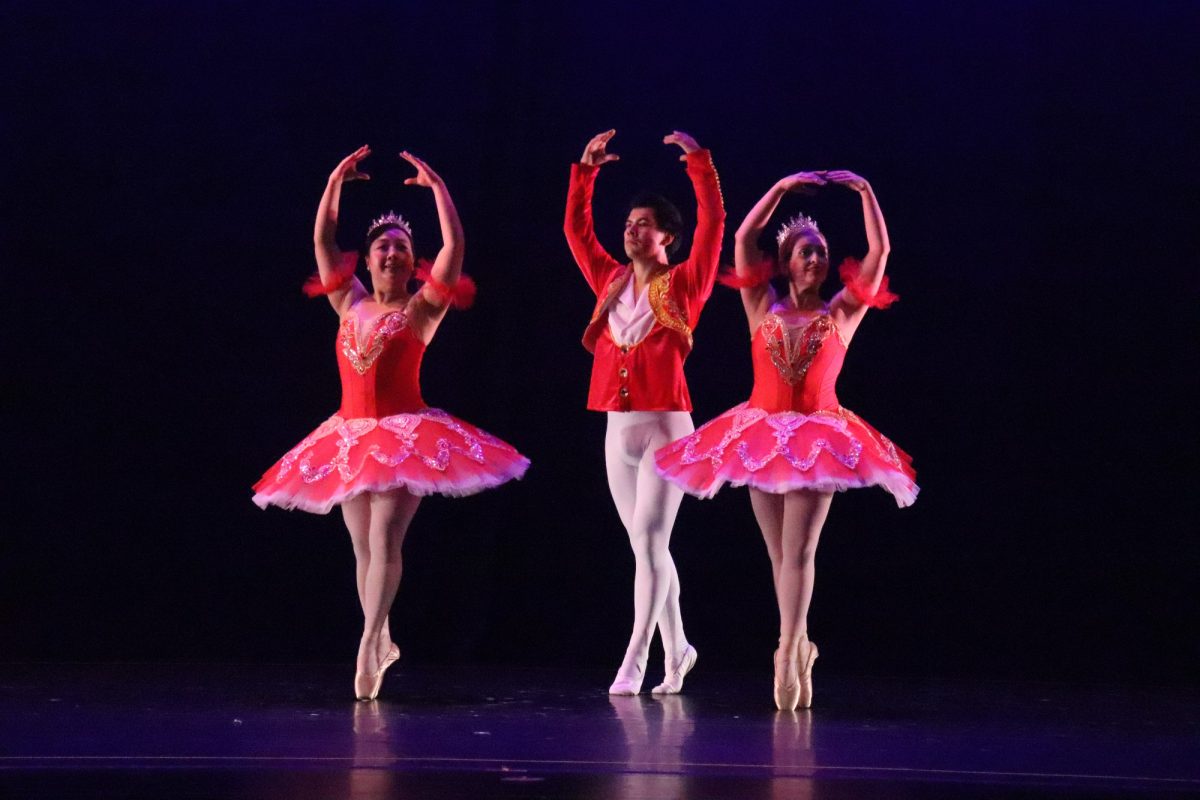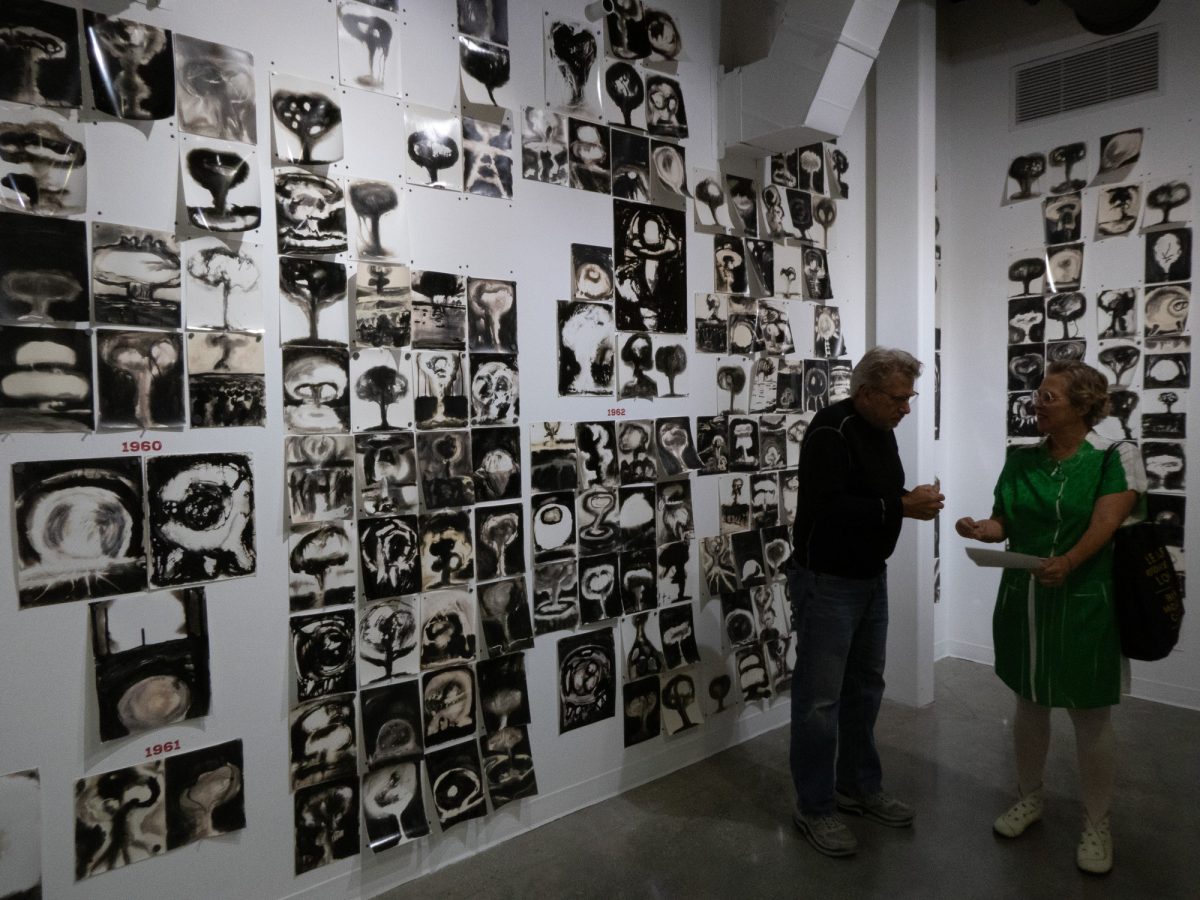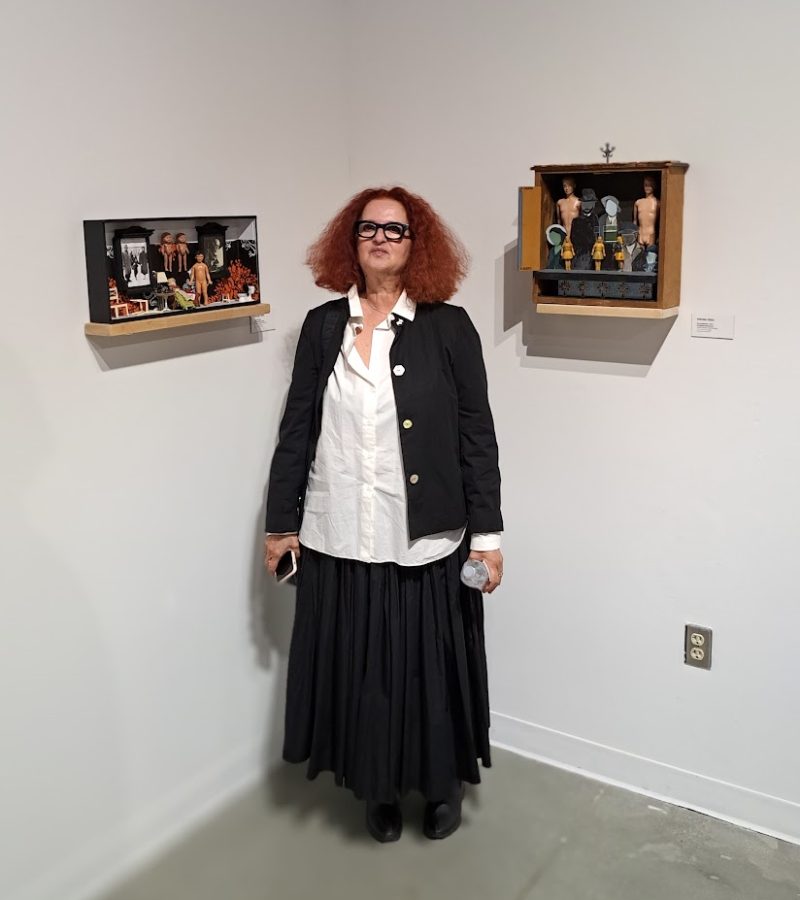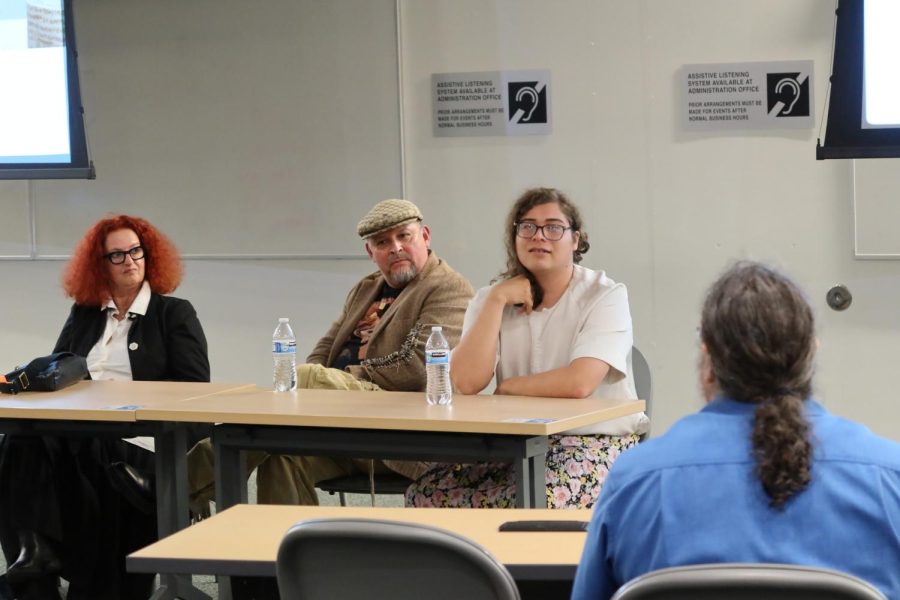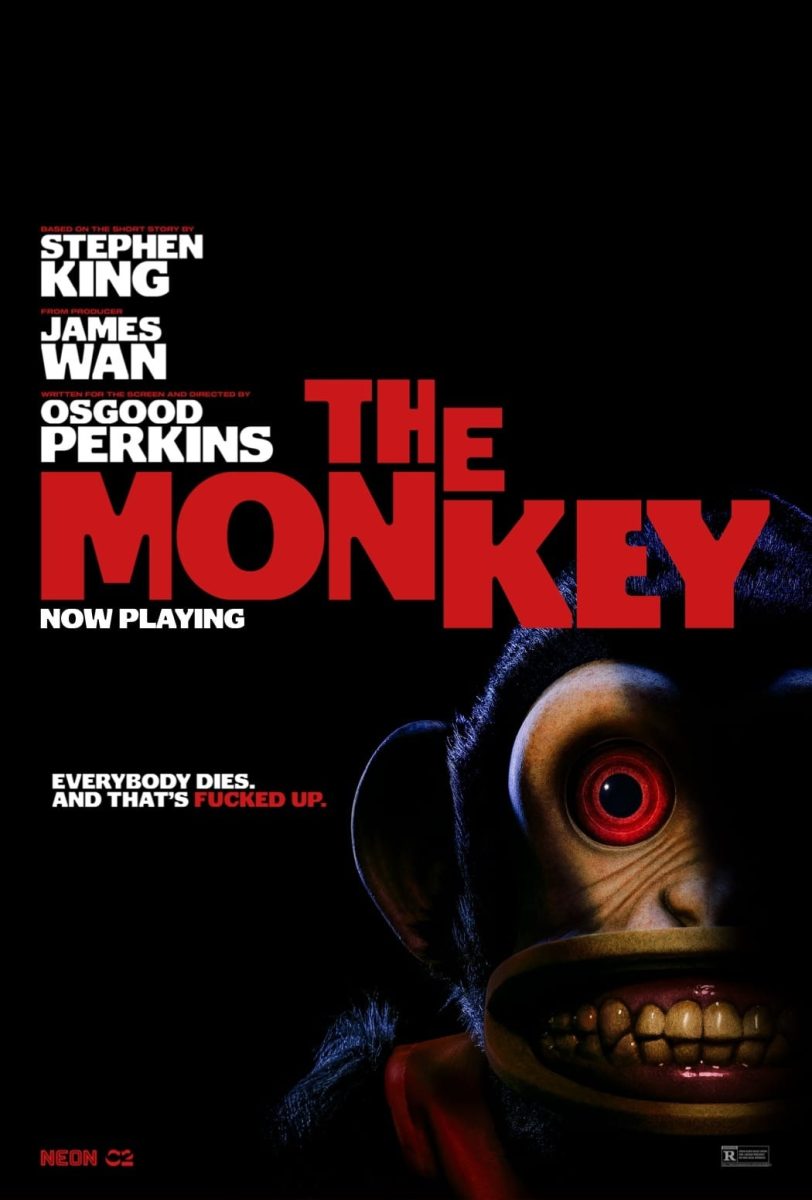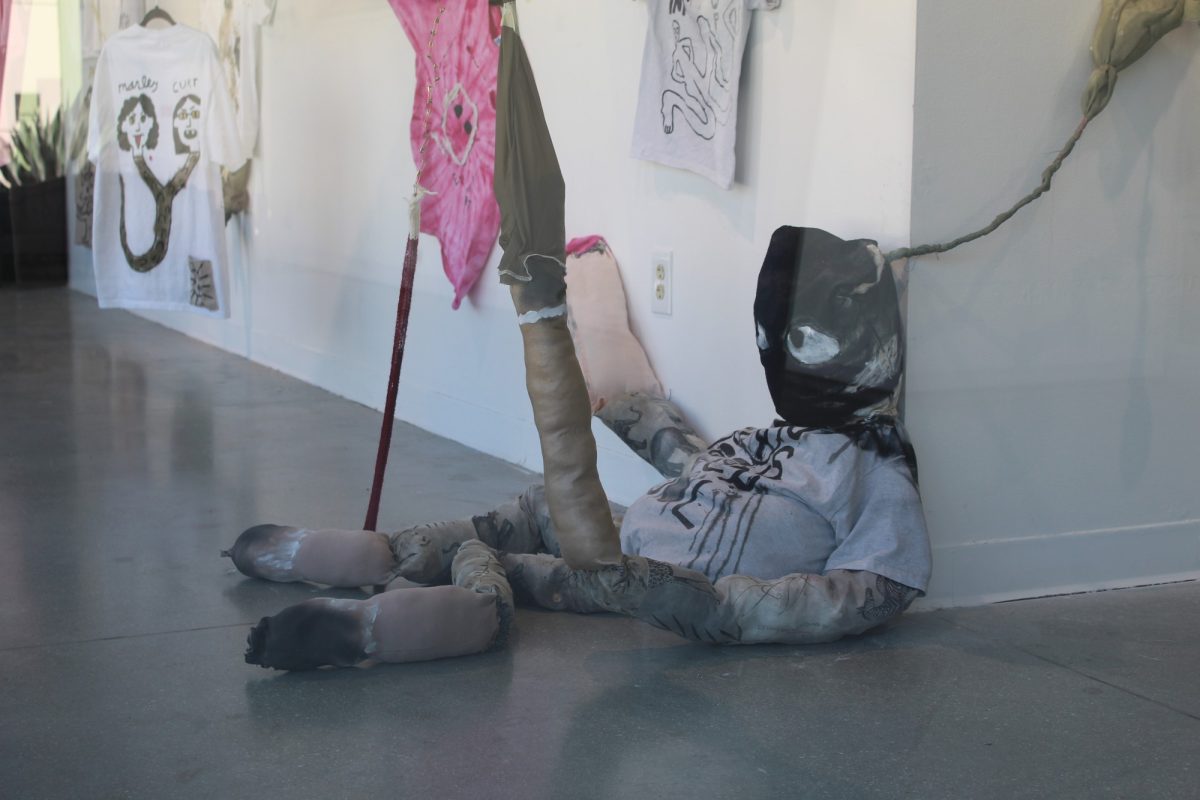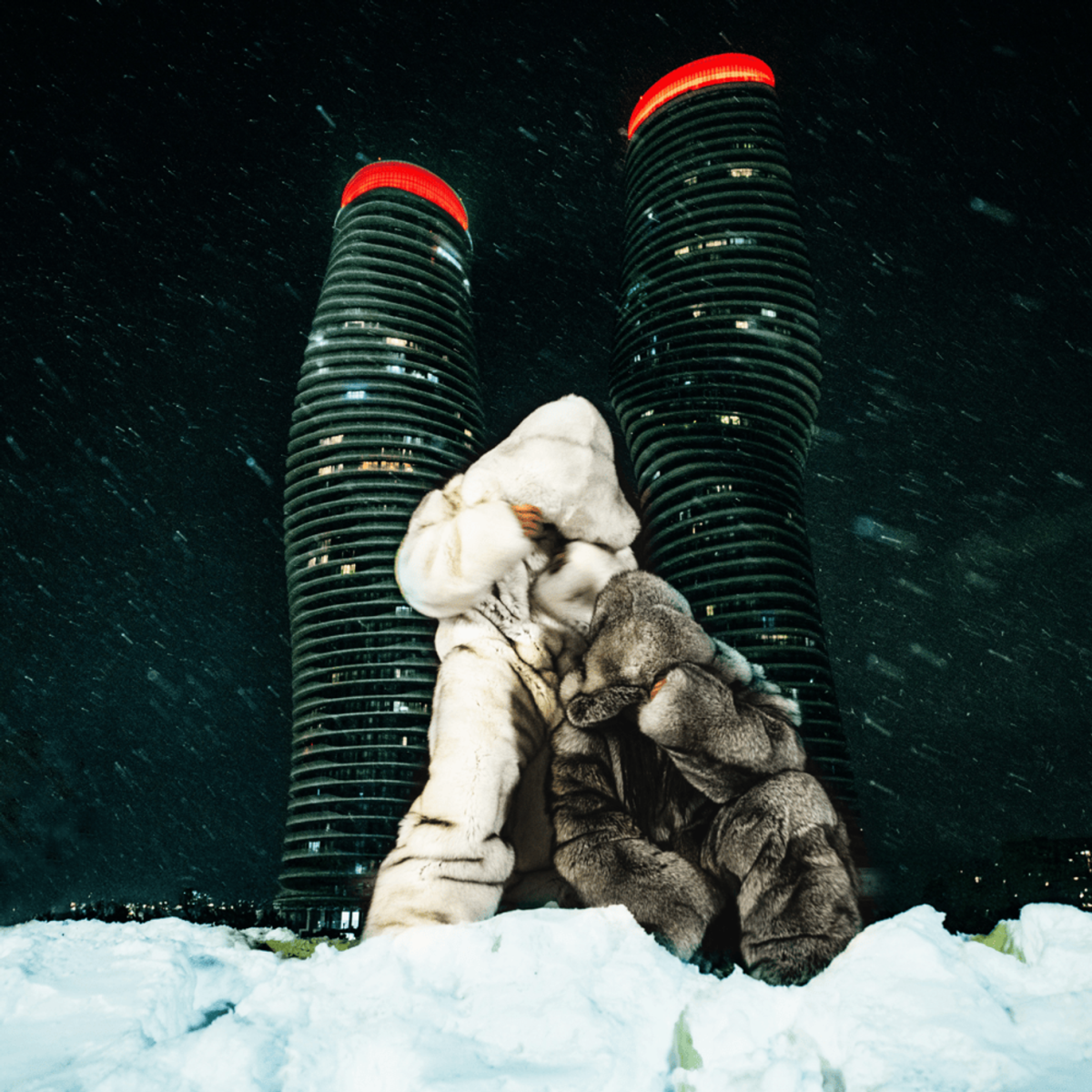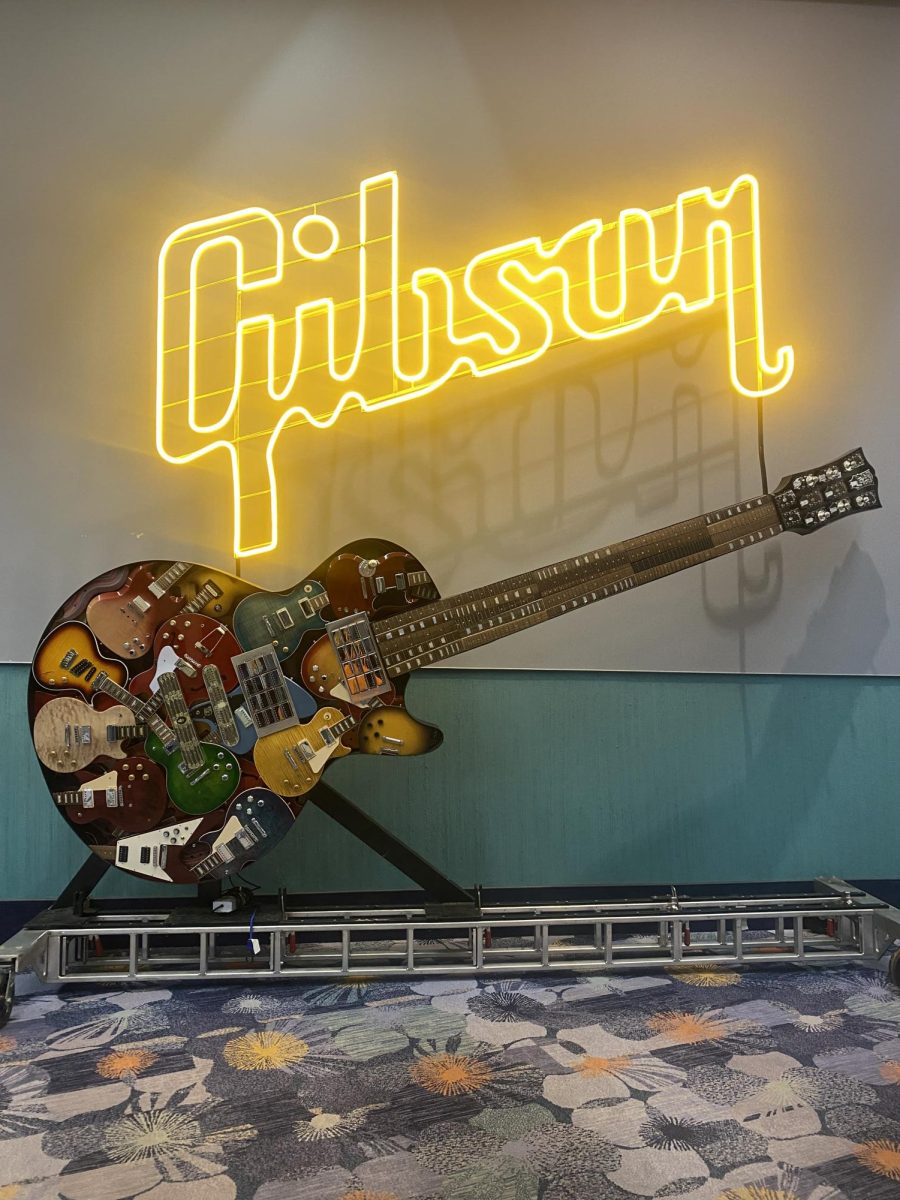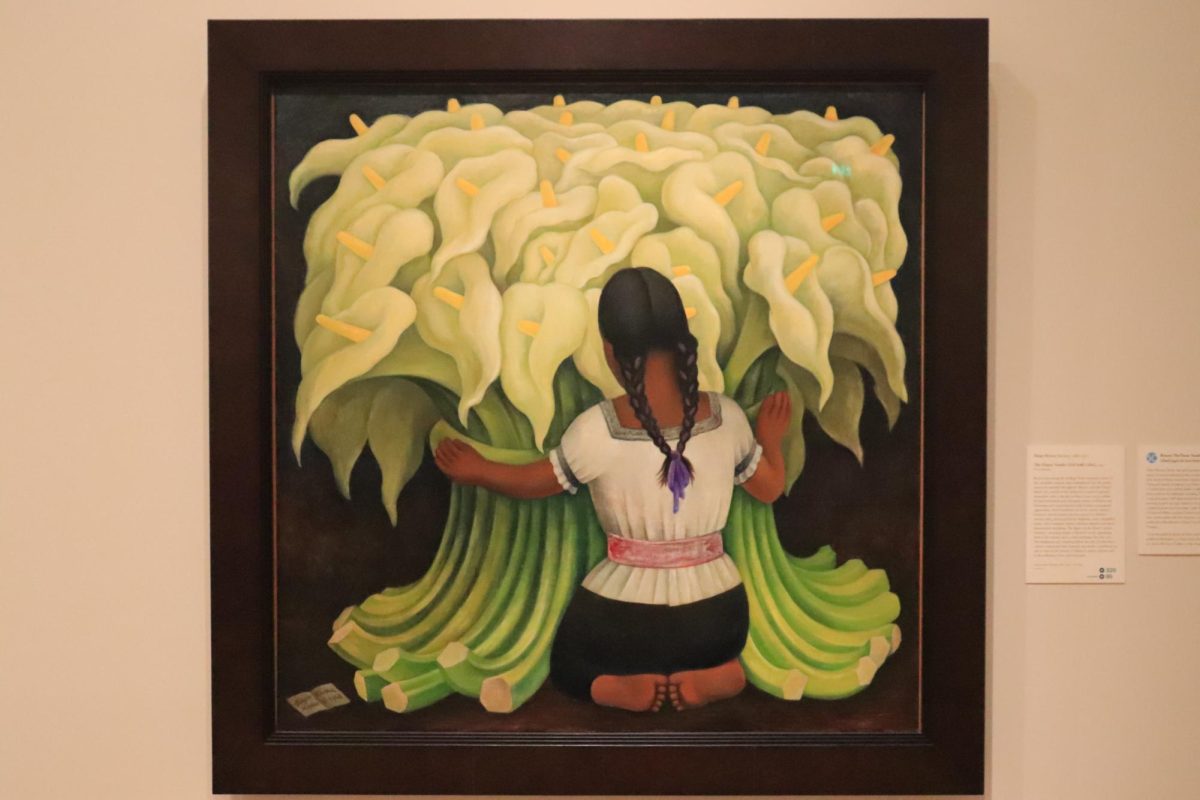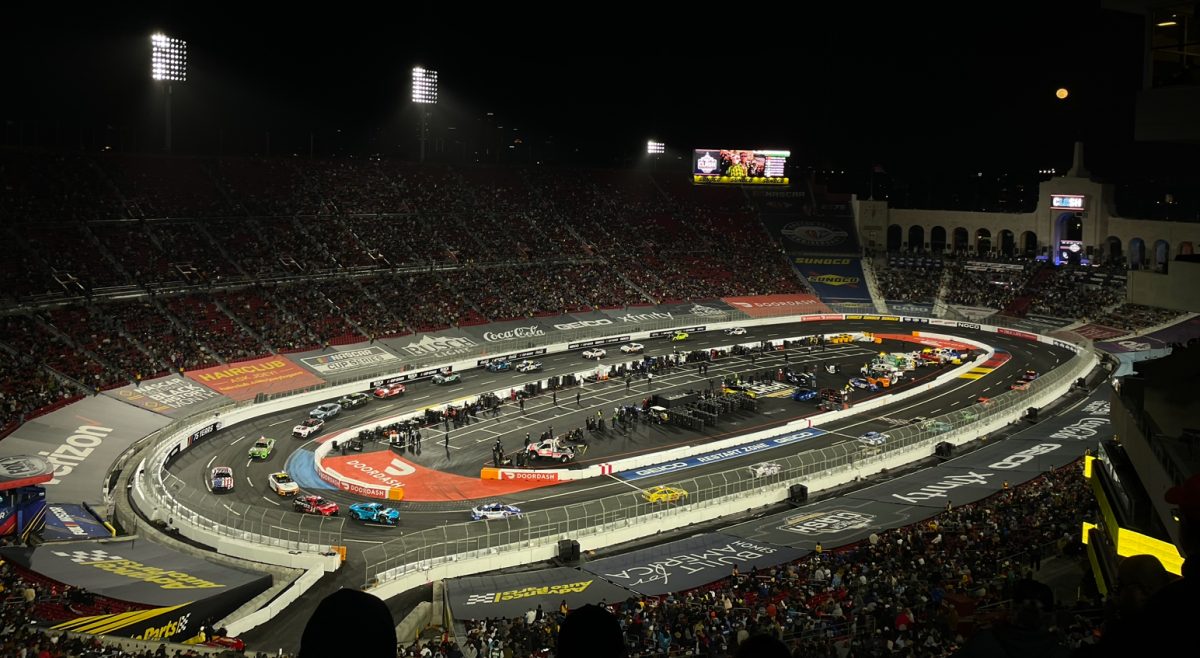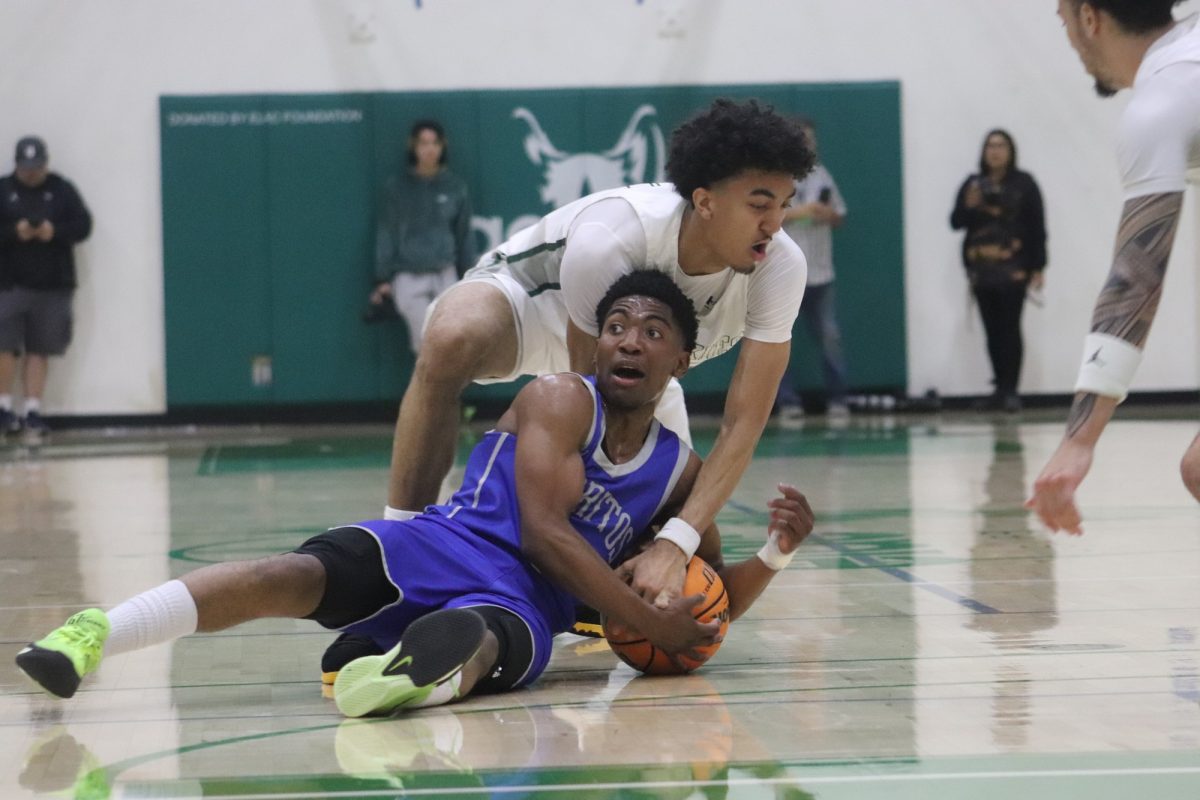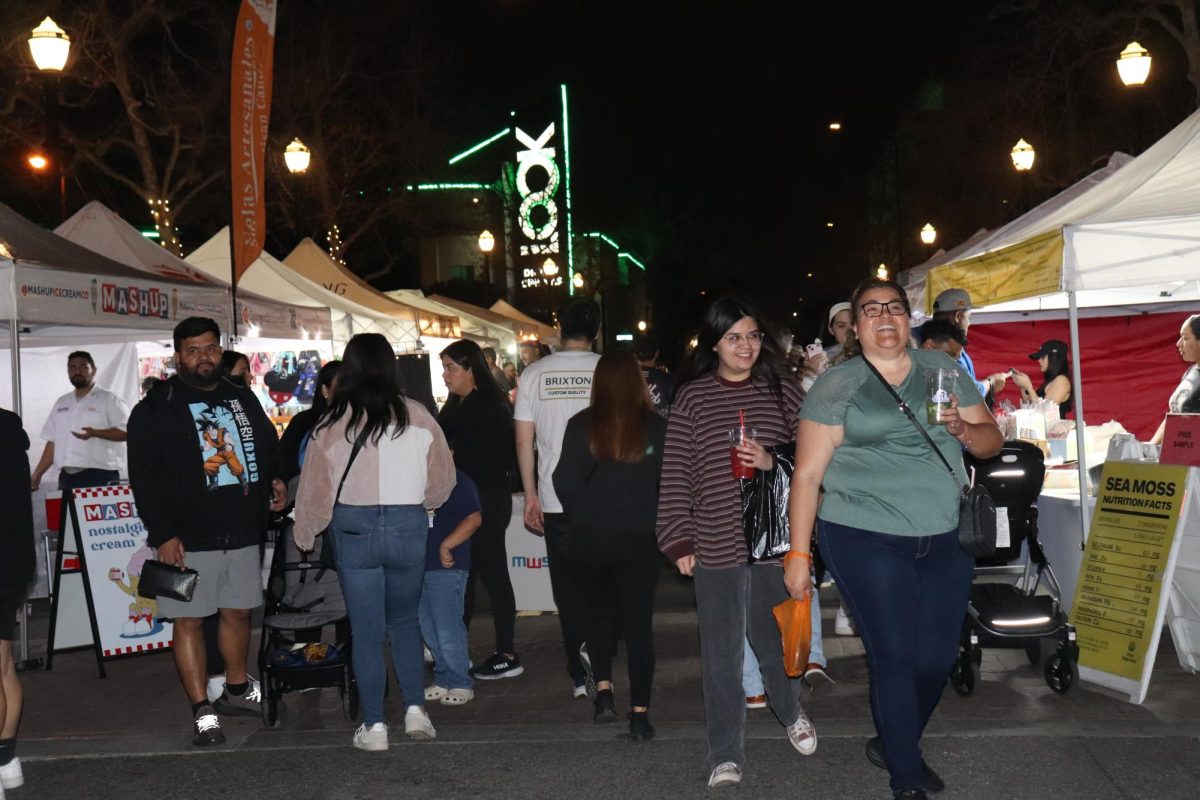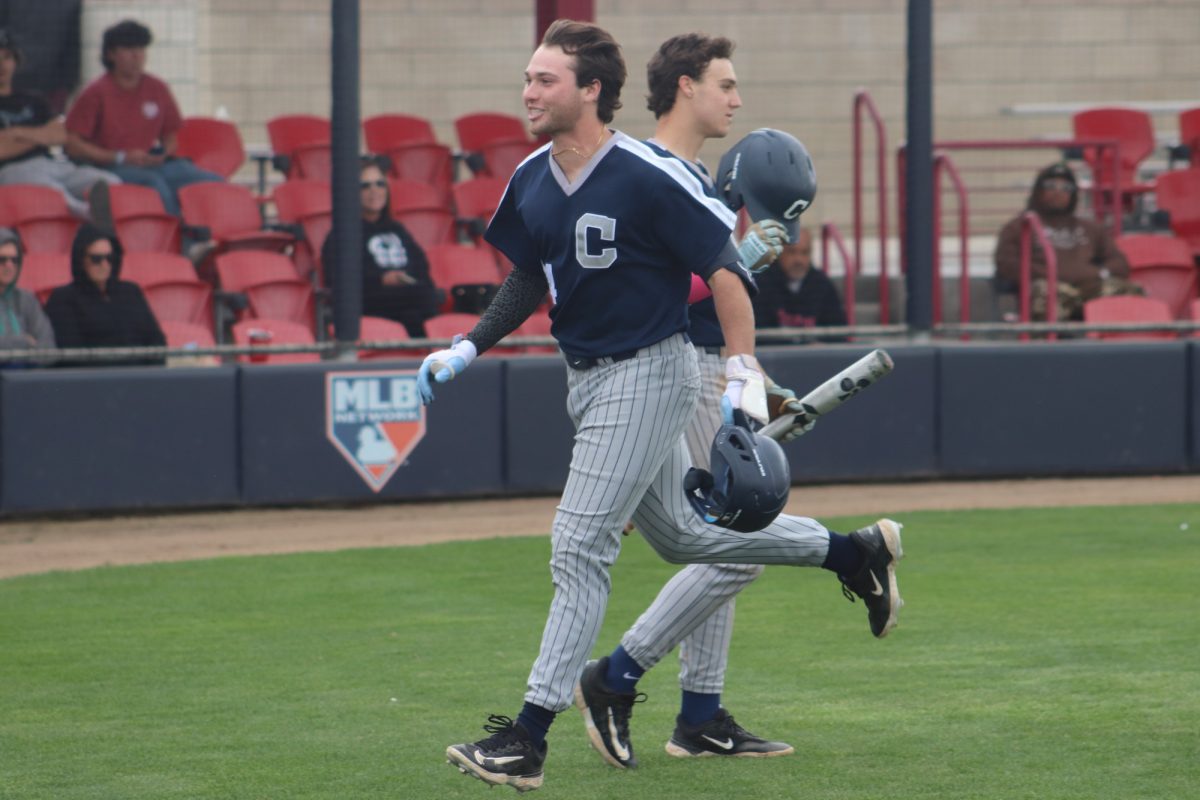The Art Department holds its by-weekly “Artist Talk” where they release the new window dressing and art gallery while the artists talk about their art on Oct. 24 at 6 p.m.
The first artist that came up to the stage was Elin O’Hara Slavick, who was the Professor of Visual Art, Theory and Practice at CalTech, she’s the author of “Bomb After Bomb: A Violence Cartography“ and “After Hiroshima,” just to name a few.
She first talked about the series of art she called “Catharses/Anecdotes,“ which were writings of different words and phrases that were created with acrylic watercolor paintings on paper.
“I started the series ‘Catharses’ as a therapeutic accept to purge my mind of recurring negative thoughts and specifically negative thoughts,” Slavick said.
“I found myself in a state of liberation while working on these [art],” she added, “insults became compliments, jokes, reflections and the revelations of the speakers.”
“I’m not claiming that this art are great on any level. In fact, they’re bad paintings, in an academic sense,” Slavick said, “The art I mostly admire and the art that stays with me is art that addresses the difficulties of the world.”
The second speaker was William Camargo, who’s an artist born and raised in Anaheim, California, and is a photo-based artist, community archivist, activist and advocator.
“There’s a lot of lived experience that I engage with in my community and I put it back into my work,” he said.
The LatinX artist showed one of his family birthday photos and talked about the ‘cholo’ upbringing that he was around.
“The reason why I show some of this work is because this was kinda the neighborhood party,” Camargo said about the family photo, “Growing up in the 90s, everyone was invited in the apartment complex.”
The series of art Camargo is making is called, “Origins and Displacements,” which dealt with the history and he grew up not knowing.
“These [the art from the series] are some of the locations where I have this sort of fractious relationship or one where I have memories that are tainted by the history of my city.”
One of those examples is the art piece called, “Damn I Can’t Go On This Side of the Park?” which was a park that Camargo played on.
“This is the park I used to play soccer when I was 10-14 years old that I later realized that the park was segregated in the late 40s,” Camargo said.
The last artist that went on stage was Josè Guadalupe Sánchez III, who is an interdisciplinary artist born and raised in West Los Angeles, attained a Master of Fine Arts degree from USC and is a tenure-track assistant professor at Occidental College.
Sánchez III’s work focuses on thinking about the future, vulnerability and self-reflexivity.
Sánchez talks about his cartoon realistic world where he has a road runner background, which was something he watched as a kid.
“The idea was to paint different family members in these spaces,” Sánchez said, “I often think about what kind of reality [this is my nana] was she presented when she migrated to the United States?”
The art gallery artist also talked about some art pieces with pigeons but one particular was the one painting he had of five pigeons in an Inglewood apartment.
“This is the memory of my dad’s apartment in Inglewood apartment,” the artist said, “These are five different pigeons, representing a family body.”
The interdisciplinary artist talked about how parts of masculinity were negative and talked about the loss of his father, which both he and a local artist were dealing with.
“We had just both lost our fathers and we were thinking of this space that we had to navigate thinking of what we grew up with and the safety of crying in public spaces.”
“It’s thinking about and deconstructing or subvert these notions of masculinity that we always have to be stoic or strong and we can’t present a moment of vulnerability,” Sánchez III said.
After the artists gave their speeches, they took some time to do a Q and A then everyone got to get free pizza and saw the art in the art gallery.



